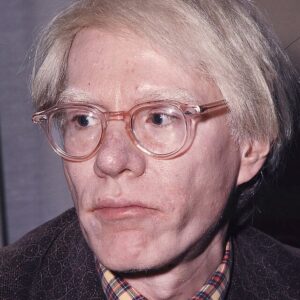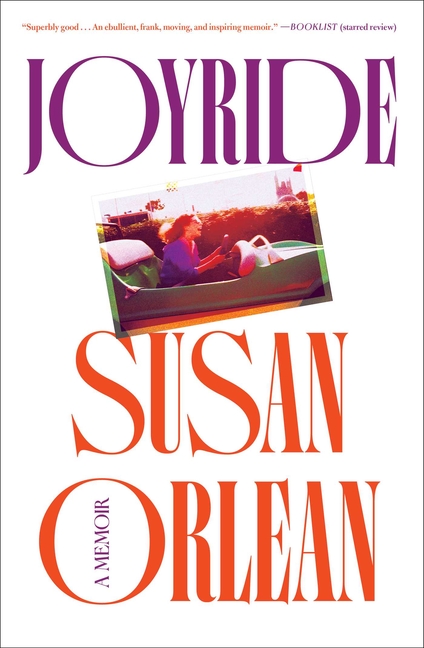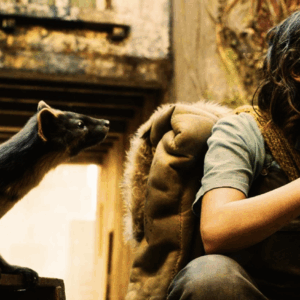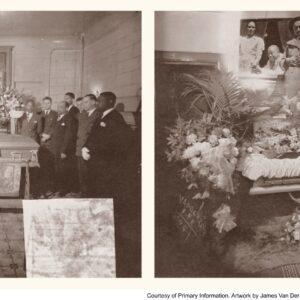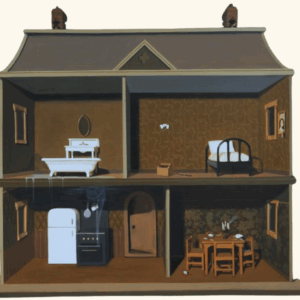A couple of days after Trump’s electoral victory, a fresh piece of graffiti appeared on a fence in a middle-class, gentrifying suburb of Melbourne. In foot-high, almost elegant cursive lettering, stark white on a smooth black panel, it said this: 1. Cunt-punch a slut.
When I saw that sign I felt dead inside.
I turned away. I tried to put it from my mind; failed. It kept returning, white on black. A stark, hateful statement of the new world order.
A little later I understood that this inner deadness was familiar, for it was the same kind of psychic collapse I’d felt on first hearing the radio documentary that set off the spark for my fifth novel, The Natural Way of Things.
The documentary was about the Hay Institution for Girls, a brutal prison for teenaged girls which operated in the rural Australian town of Hay in the 1960s and 70s. At this State-run prison of young women deemed somehow wayward or promiscuous, the inmates were put to hard labor, forced to march everywhere in military fashion, forbidden from speaking to one another. At all times they had to look at the ground. The authorities played many twisted psychological games—like ordering the girls to build a stone paving path, and then on its completion to smash it to pieces—as official, sanctioned punishments. But there were also many sadistic unofficial penalties. In a place full of young women “guarded” almost entirely by men who despised them, you can imagine the horrors inflicted.
When the radio program ended, I wanted only to forget this appalling place and what it meant. But what I’d heard, and the images of those girls would not leave me. What seemed cruelest of all was this: the reason many of the girls were first imprisoned was that they’d been sexually molested in some way—at home, in the community—and they’d told someone about it. It was speaking about what had happened, and asking for help, that got them locked up.
Slowly and reluctantly, I understood I needed to write about this. I began work on a realist novel about a prison for young women, set in remote Australia in the 1970s. But a pressing problem quickly emerged: the writing was dreadful. The characters were lifeless clichés; nothing on the page surprised. The inner deadness I’d felt on hearing what the real girls suffered had spread to my language, to the sentences and the story, and my imagination could not revive them.
It was around this time that two truths came to me: realism was not going to help me this time, and the material, the substance of this book, could not remain neatly in the past. For I’d begun to notice fleeting news items involving young women: a publicist took legal action against the chief executive of a department store who preyed on and harassed her sexually. A female army cadet discovered she’d unwittingly been filmed while having sex and her sexual partner, a fellow cadet, had broadcast this most private act live via Skype to his buddies. Another woman mustered the courage to speak of an assault by a group of drunken footballers; she remained traumatized years later.
What echoed the Hay girls’ punishment was this: in every scenario the woman was vilified. The army cadet was disciplined by the army for speaking to outsiders, then dubbed “that Skype slut” by her peers. The department store publicist was excoriated in the media as a gold-digger betraying the sisterhood with her outsized bid for compensation. When the footballers could deny no more, they tearfully apologized—to their wives, families and employers. In all cases the mistreated women were cast as liars, sluts, homewreckers. There were slaps on wrists and crocodile tears from the men before they returned to their marriages or moved on to better jobs. The men go on; the women vanish from the story.
This slap of understanding that contemporary attitudes simply echoed history, that this loop of hatred seemed ever-repeating, lit a fuse of fury deep inside my writer’s brain. But a novel requires years of immersion in your material. This was ugly stuff, bleak and paralyzing. Also, where was the complexity in this blunt, stupid hatred? What was there to explore? I couldn’t live inside it for the duration of a whole novel. I was no activist, nor commentator, nor polemicist. I certainly didn’t see myself as a political writer. How could an artist like me work with material of this kind? How could I respond?
The painter Jasper Johns once said art is what happens when you take an object and do something to it—and then do something else to it. It was this “something else” that slowly emerged, through trial and error, allowing me to stay with the story.
I suspect there may be a relationship between Johns’s “something else” and what the revered acting teacher Uta Hagen called one’s “inner objects.” I’ve only recently come to Hagen’s classic Respect for Acting, but am finding it revelatory about the writing process. Among other lessons, Hagen taught the use of ‘personal and private objects’ with which an actor can enliven her work:
I refer to such intangibles as colors, textures, music, elements of nature. I must admit that I do not know how to teach this, and I assiduously avoid teaching it. I can only make you aware that these “essences” can be valuable sources…
She speaks also of “release objects”:
. . . a polka dot tie, an ivy leaf on a stucco wall, a smell or sound … a grease spot on the upholstery, things as seemingly illogical as those. I used these small objects as stimuli successfully and questioned their logic only in discussion. Later, I learned from [a psychiatrist] that this little indirect object was the release object, a release of the censor which moves along with us and says, “Don’t lose control.”
At the time I was struggling with my book the most, I interviewed the novelist Amanda Lohrey, who spoke of her need for fiction to carry some resonance, some hovering meaning beyond that offered by banal reality.
“There is the literal surface of life,” she told me, “and then there’s that oceanic meaning underneath . . . any narrative that doesn’t have a few messages from that realm is, for me, deficient. Too mastered, too known, too literal.”
For the first time, I saw that a major part of the problem with my failing novel was fear of my material and its darkness, and my overwhelming desire to control it with constrictive rational thought. And so, I let go. I changed the time-frame from the past to a surreal kind of present, or a maybe-future. Inner objects and otherworldly messages suddenly gathered force in my work, releasing my story about a cruel outback prison for modern young women from the desolate realism I was wrestling with, opening up new narrative possibilities: dreamier, stranger, more metaphorical; darker but more beautiful.
The question of how these objects and messages arose is one I can hardly answer, except to say that once I decided to surrender, once I accepted this book must be written in an almost blind, dreamlike state—that I must not question the driving illogic of my subconscious, primitive mind, it began to throw up images and objects that had their own power, and which I instinctively understood could make the story grow and move.
What were these things? Often they were natural creatures—a little brown trout, rabbits, kangaroos, cicadas, birds, a frog. But also stranger, darker emblems of femininity gone feral: a grotesque doll made from sticks and hair and rabbit skin; shaven heads and cooking pots and ovens and sanitary pads. The objects were mushrooms gathered for poison and a ghostly white horse without its armor-clad knight. They were long dresses grimy with dirt, padlocked leashes conjuring chastity belts, bonnets evoking both blinkers and scold’s bridle. They were wild and mad and weird, and they set my book free.
These objects and messengers came from my immediate surroundings, from the media, from dream, from our collective unconscious, from our history and contemporary culture. Drawn up from the dark, they liberated my novel from the bleak facts of its origin story, and allowed it to move, not only narratively—in plot terms—but psychologically. They allowed the characters to form themselves into powerful, flawed individuals, in turn permitting a richer exploration of femaleness and power, of choice and complicity, and of the idea that, as Victor Frankl wrote: “Between stimulus and response there is a space. In that space is our power to choose our response. In our response lies our growth and our freedom.”
* * * *
Let me take you back to that vile graffiti on the fence. For me, the deadening power of that sign comes not simply from my revulsion, or its hatred of all women, but more importantly from the protective impulse triggered immediately following that first shock: the impulse to turn away, to ignore—and thereby on some deep and dangerous level to accept, and legitimize. The fact that the words remained on that fence even 24 hours after first written shows that this response had already taken place in other viewers. The hatred worked: anyone who saw that violent, degrading instruction and turned away—who perhaps is seeing it and turning away even now, as I write—has understood and internalized the reality it seeks to create. In turning away, we agree to accept that this message is part of the tolerable, even familiar, fabric of our lives. It is the natural way of things.
But art can give us a way to refuse.
Take an object. Do something to it. Do something else to it. Art can take something as dark as the Hay Institution for Girls, as hateful as that graffiti, and in applying the transfiguring power of “something else,” it can give us the strength not to turn away and normalize, but to keep looking—and in doing so to question, provoke, understand, reject, change. The “something else” of art can turn inner deadness into smoldering embers. If we fan them, they can become fuel and fire, igniting our courage and hope, giving us the power to resist, to speak, transform. We’ve never needed this fuel, this fire, more than now.
Charlotte Wood
Charlotte Wood is the author of six novels and two books of nonfiction. Her novel The Natural Way of Things won the 2016 Stella Prize, the 2016 Indie Book of the Year, and 2016 Novel of the Year in her native Australia, and was joint winner of the Australian Prime Minister's Literary Award for Fiction. In 2019 she was made a Member of the Order of Australia (AM) for her significant services to literature.










